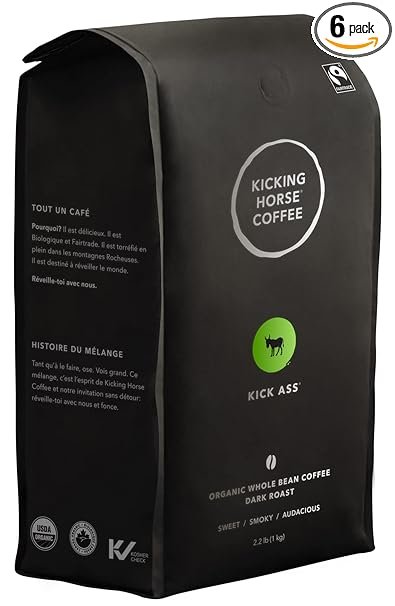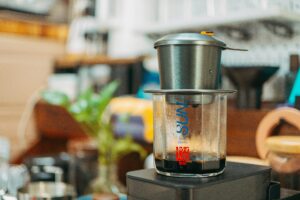Imagine this: you wake up, bleary-eyed and craving a jolt of energy. You reach for your trusty bag of coffee beans, ready to brew a cup that awakens your senses. But as you open the bag, a nagging doubt creeps in. Have these beans lost their magic touch? Fear not, fellow coffee aficionado! We’ve all been there, faced with the dreaded possibility of a stale, lifeless brew. But worry no more, because today we’re diving deep into the world of coffee bean freshness, uncovering the secrets to ensuring every cup bursts with flavor and aroma.
Think of your coffee beans like precious little flavor bombs. They’re brimming with volatile oils and delicate compounds that create that complex, nuanced coffee experience we crave. But these treasures are vulnerable. Just like a cut apple quickly browns, coffee beans are susceptible to enemies that steal their vibrancy: air, light, and moisture.
Table of contents
Air: The Stealthy Thief
Let’s talk air first. It might seem harmless, but oxygen acts like a stealthy thief, slowly robbing your beans of their flavor. Once exposed, those precious oils start to oxidize, leading to a flat, dull taste. Imagine a vibrant firework show losing its dazzling colors – that’s what happens to your coffee’s flavor profile when air gets in.

Light: The Silent Saboteur
Next up is light. Think of it as a silent saboteur working its magic behind the scenes. Just like sunlight fades a beautiful painting, light can break down the delicate compounds in your beans, resulting in a stale, one-dimensional flavor. So, ditch those cute, clear canisters that look so Instagram-worthy – they might be pretty, but they’re not doing your coffee any favors.
Moisture: The Unwelcome Guest
Finally, there’s moisture. This unwelcome guest can wreak havoc on your coffee beans. It can create the perfect breeding ground for mold and bacteria, not to mention significantly altering the flavor. Picture a perfectly crisp autumn leaf turning soggy and mushy after a downpour – that’s what moisture can do to your coffee’s texture and taste.
Fortress Freshness: Building the Perfect Storage
Now that we know the enemies, let’s build a fortress of freshness for our beloved beans. The first line of defense? An airtight container. Think of it as a knight’s sturdy armor, shielding your beans from the evils of air. Opt for opaque materials like ceramic, stainless steel, or even a dark glass canister. These heroes will keep those pesky oxygen molecules at bay.
Kicking Horse Coffee Kick Ass

- Dark Roast
- Whole Bean
- Certified Organic
- Fairtrade, Kosher
- Black
Whole Beans vs. Ground: A Freshness Faceoff
Here’s a fun fact: whole coffee beans stay fresher for longer than their pre-ground counterparts. Why? Because grinding exposes a larger surface area to the elements, accelerating the oxidation process. Imagine a whole apple versus a sliced one – the sliced apple browns faster because there’s more surface area exposed to air. So, if you’re a serious coffee aficionado, consider grinding your beans just before brewing for the ultimate taste experience.
Location, Location, Location: Choosing the Coffee Bean Sanctuary
Just like real estate, location matters when it comes to coffee bean storage. Avoid areas near heat sources like ovens or stovetops, as heat can accelerate the breakdown of those precious flavor compounds. Think of it as keeping your chocolate bar away from a sunny window – heat is not your friend! Instead, seek out a cool, dark spot, like a pantry or cupboard.
Beyond Convenience: Ditch the Decorative Display
We all love those decorative coffee canisters that adorn our countertops. But here’s the truth – they’re not ideal for long-term storage. Think of them as those beautiful, flowy dresses you wear for special occasions – not exactly practical for everyday wear. After purchasing your coffee beans, transfer them to their designated airtight container for optimal freshness.
Minimize Exposure: A Coffee Bean Conservation Effort
Here’s a simple yet effective tip: don’t leave your bag of coffee beans constantly open. This is like leaving your favorite cookies out on the counter – they’ll dry out and lose their flavor faster. Scoop out only what you need for your next brew and reseal the bag tightly. Every little bit counts when it comes to preserving those delicate oils and aromas.
Freezer: The Long-Term Solution
For those who buy coffee beans in bulk, the freezer can be your long-term storage superhero. Just like freezing leftovers extends their shelf life, freezing coffee beans can significantly slow down the oxidation process. Here’s the key: portion your beans into airtight containers before freezing, and be sure to thaw them completely before grinding to avoid moisture condensation.
Freshness is Key: A Symphony of Flavor
By following these tips, you’ll be well on your way to unlocking the secrets of coffee bean freshness. Remember, fresh beans are the foundation for a truly exceptional cup. They’re like the instruments in an orchestra – each bean plays a role in creating a symphony of flavor and aroma. When your beans are fresh, the notes come together beautifully, resulting in a complex and satisfying experience. But stale beans are like instruments that are out of tune – the music becomes flat and disjointed.
The Art of the Grind: Matching Freshness with Brewing Method
The grind size also plays a crucial role in freshness. A coarser grind is ideal for brewing methods like French press, where the water has longer contact time with the grounds. Finer grinds are better suited for espresso machines, where the hot water passes through quickly. The key is to match the grind size to your brewing method to ensure optimal extraction and avoid bitterness.
Freshness Beyond the First Cup: Maintaining Bean Bliss
So, you’ve brewed that first glorious cup from your freshly opened bag of beans. But how do you maintain that blissful freshness over time? Here’s the good news: with a little planning, you can enjoy vibrant coffee for weeks, not just days.
- Buy in Moderation: Unless you’re a hardcore coffee drinker who goes through beans like water, resist the urge to buy in bulk. Freshly roasted beans are always best, so aim to purchase quantities you’ll use within a reasonable timeframe (ideally two to four weeks).
- Embrace the Ritual: The act of grinding your own beans can be a delightful ritual. But if you’re short on time, consider buying a small, airtight container specifically for storing pre-ground coffee for daily use. Just remember to replenish it regularly from your main stash.
- The Sniff Test: Here’s a simple yet effective way to gauge freshness: the sniff test! Fresh beans should have a rich, complex aroma. If the smell is dull or flat, it might be time for a new bag.
Freshness is a Journey, Not a Destination
By following these tips and tricks, you’ll transform yourself from a coffee drinker into a coffee connoisseur. You’ll appreciate the subtle nuances of different bean varieties, brewing methods, and the impact of freshness on the final cup. Remember, the journey to coffee bean freshness is an ongoing adventure. With a little knowledge and practice, you’ll be able to unlock the full potential of every bean, brewing cups that are not just good, but truly exceptional. So, go forth, coffee lover, and embrace the world of fresh, flavorful coffee!






